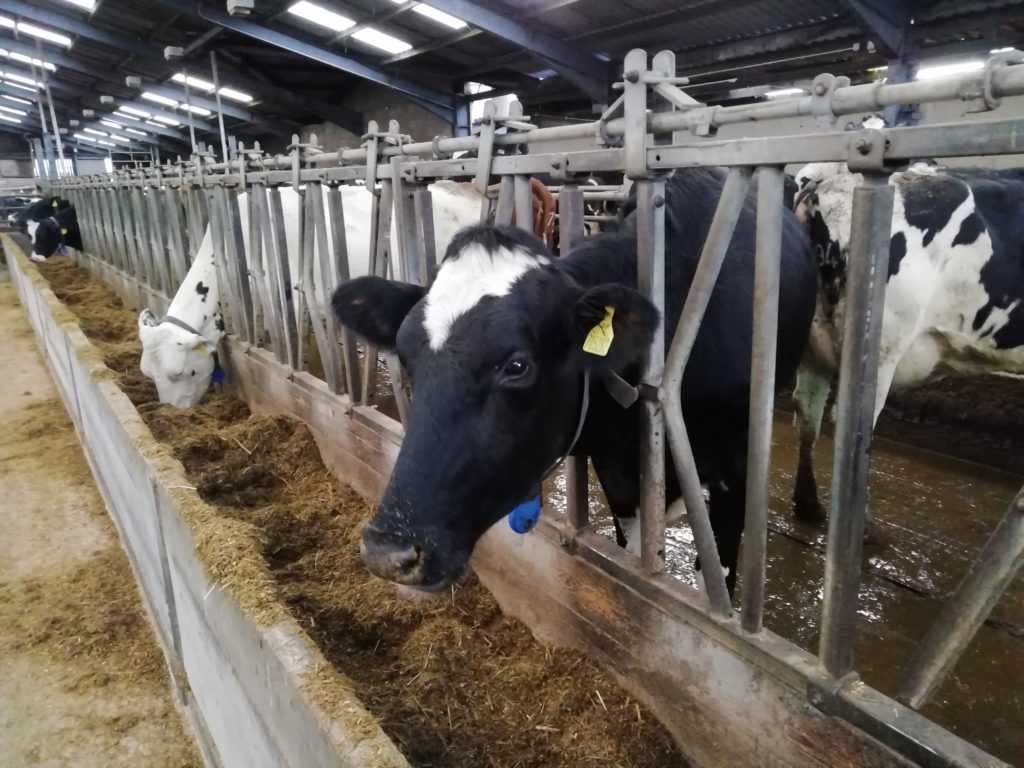Risks With High Dry Matter Silages This Winter
22 October 2021Analysis of this year’s dairy silages through SRUC’s Analytical Laboratory show average dry matters in the early 30’s for both 1st and 2nd cuts:
| Nutrient | Dairy 1st Cut Average Pit | Dairy 2nd Cut Average Pit |
|---|---|---|
| Dry Matter % | 31.6 | 33.3 |
| ME MJ/kg DM | 11 | 11 |
| Crude Protein % DM | 13.2 | 13.2 |
| NDF % DM | 45.7 | 45.7 |
| Sugar % DM | 7.2 | 8.1 |
| Potential Acid Loading | 822 | 784 |
| pH | 4.4 | 4.3 |
However, a number of samples were approaching 40% dry matter and these high dry matter silages can bring challenges. Some risks to be aware of that can affect milking performance and health of dairy cattle include lower dry matter intakes, ration sorting with consequences for rumen health and feed conversion efficiency and mycotoxins from silage not keeping well in the pit.
Lower Intakes
If dry matter intakes are not as expected when feeding high dry matter silages, the addition of water to the mix can help. Drier rations require more chewing to produce the necessary amount of saliva to help achieve adequate moisture levels in each mouthful of feed for the cow to swallow. This leads to longer rumination times and lower intakes. Also, more water is required as good rumen function depends on sufficient water consumption, so water quality and accessibility are important. Aim for a dry matter of around 40% and no more than 45% in the TMR.
Ration Sorting
Ration sorting is where the cows are able to select the concentrates and finer forage particles out of the mix first, leaving the longer chop or more fibrous material to be consumed later in the day. This can lead to fluctuations in rumen pH, potentially leading to sub-acute ruminal acidosis, as well as less dominant animals receiving a lower quality ration )with less concentrates), which may not meet their nutritional requirements. This is especially true in situations where feed space is insufficient. A tell-tale sign of ration sorting is where the refusals look considerably different to the freshly mixed ration.
Sorting can be an issue when feeding very dry forages and where the dry matter of the ration is greater than 45% as it is easier for cows to be more selective. The risk can be reduced by adding water to the mixer wagon or practicing compact feeding (https://www.progressivedairy.com/topics/feed-nutrition/compact-tmr-from-denmark) to help moisten the mix, making it more difficult for cows to sort and select out pellets/concentrates over more fibrous forage particles. Reduced sorting can lead to improvements in dry matter intake, more milk, higher butterfat % and better muck consistency.
Pit Management
High dry matter silages are more prone to spoilage on the clamp face and so good clamp management is essential. Aim to move across the clamp face as quickly as possible, ideally within three days, taking half depth blocks if necessary. Use a block cutter to keep the face as clean as possible and reduce air ingress, minimising the risk of secondary fermentation.
Mycotoxins
With high dry matter there will be an increased risk of moulds and mycotoxins due to the higher pH and silages being less stable. Silages with a pH of 4 or less are thought to be fairly stable and are less likely to encourage growth of mycotoxin producing moulds. It should be noted that mycotoxins can be present even if there are not obvious signs of mould and their effects can be additive if several mycotoxins are present in feeds.
They can have major effects on rumen microbes, reducing feed digestibility, leading to reduce milk yield, dry matter intake and scour from inflammation of the digestive tract. Other effects include immune suppression, with cows more susceptible to diseases including mastitis and metritis. It is more likely to be early lactation cows that will be susceptible to diseases from supressed immunity as they are already naturally immunosuppressed at calving. Aspergillus fumigatus is a common mycotoxin producing mould found on conserved forages and can cause pneumonia as well as mastitis and abortions. Other mycotoxin symptoms include effects on fertility, with poor conception rates, cystic ovaries, embryo loss and abortion. In addition, udder oedema, as well as swelling of the legs and hocks can be seen where there is a high dietary mycotoxin load.
If mycotoxins are suspected, the feed can be tested and various products are available to help combat their effects.
Lorna MacPherson, lorna.macpherson@sac.co.uk
Sign up to the FAS newsletter
Receive updates on news, events and publications from Scotland’s Farm Advisory Service

